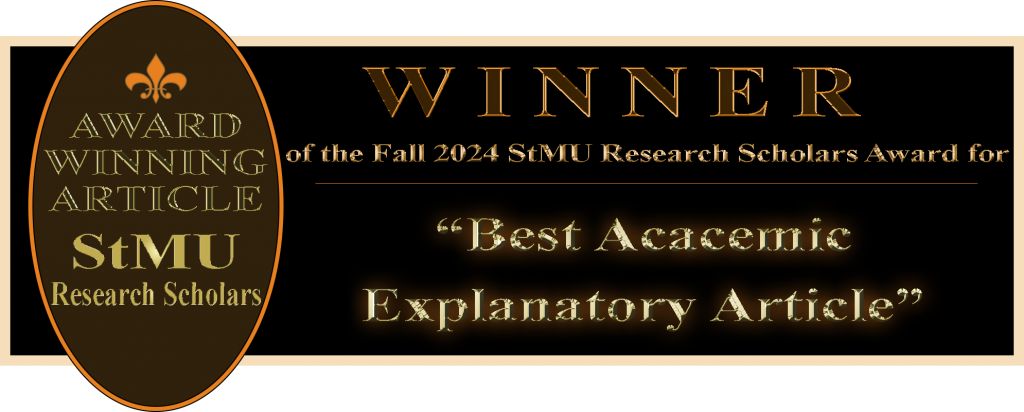
Pearl of the Orient Seas – The Philippines
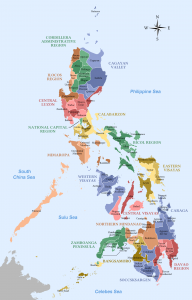
From the rocky beaches of Manila Bay to the volcanic mountains of Luzon, the Philippines is a place full of indigenous roots. The country consists of roughly 7,107 islands; however, during high tide seasons, there are approximately 7,106. If one were to categorize these islands into three subcategories, it would consist of Luzon (the northern region), Visayas (the central region), and Mindanao (the southern region).1 The total population of the Philippines is roughly 118,277,063 people throughout the nation. There is so much diversity spanning from the north through the south. Some of these groups that make up the population are Tagalog (26%), Bisaya/Binisaya (14.3%), and Ilocano (8%).2 To say there is significant diversity in this country is an understatement. It seems like there is so much information on this topic alone, yet there is more than just the sunny beaches and busy city nightlife. This sense of unknown prompted the researchers of Uppsala University in Sweden to fly to the Philippines to collect samples to analyze and sequence. Thanks to the advancement of genomic research, researchers can better understand various evolution and migration patterns. Despite the promises of utilizing such powerful technology, there comes a fine line of what boundaries researchers can cross. Although there are many benefits to using genomic biotechnology in science, there are unethical factors that researchers must be cautious of regarding utilizing human samples.
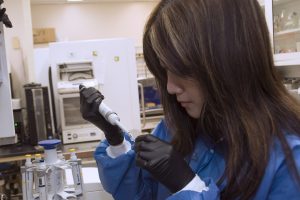
The 50,000 Year Long Migration to the Philippines
As stated previously, there is a lot of diversity within the Philippines. Naturally, researchers were interested in the migration patterns of those who migrated to the country years ago. A study conducted by a team located in the Philippines decided to unlock the secret to this migration pattern by studying the genotypes of about 1,028 participants. In total, these genotypes represented roughly 115 indigenous populations. With this data, they discovered that the population originated from about five different periods of human migration. These groups included Northern/Southern Negritos, Manobo, Sama, Papuan, and populations that were Cordilleran-related.3 One might wonder how exactly this is significant to our society, but this gives us a chance to look at the various layers of history that make up the Philippines as a country. This information can also help scientists understand how different genetic representations came to be within the indigenous communities. To understand the genetic diversity, researchers collected saliva samples via an Oragene Saliva Collection Kit. Before collecting, they took the time to ask for consent from the individual providing samples. They also made sure to obtain permission from the Indigenous Cultural Community Council. It is important to note that their protocol went through the Regional Ethical Review Board in Upsala, Sweden.4 However, the researchers did not specify if they received an ethical review from the committee in the Philippines. This is a problem in their research because it can be deemed unethical due to not getting the correct reviews from all the committees necessary. While this is critical information that can allow us to understand the genetic variation of the communities over the last 50,000 years, there are some grey areas within this kind of genomic research.
The Blind Spots of Genomic Research
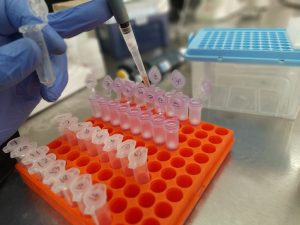
While there has been a lot of new information regarding the various indigenous groups that originated in the Philippines, there have been other opinions regarding this type of genomic research. Although science has gone far with its advancements in DNA analysis and sequencing, the unethical problem arises when researchers do not ethically comply with the rules of conducting research that involves handling human biological samples. Many studies did not have a structured framework that deemed their research ethical because many red flags arose, such as violation of individual rights, distrust from the indigenous communities in genomic research, and even stigmatization (the act of mistreating someone).5 Like many countries, the Philippines has national rules and guidelines for ethical human research called the Philippine National Research System Act of 2013. This mandated guideline states anyone conducting human research in the Philippines must follow the Philippine Health Research Ethics Board (PHREB). It explicitly states that any research that requires human subjects within the country must adhere to these rules, including research regarding studying the genetics of the human population. They further note that indigenous people are defined as those descended from various populations that inhabited the Philippines during the colonization periods.6 More challenges arise when discussing this kind of research; one example is the communication barrier within these different communities. When gathering samples, many regions visited were areas where most participants did not receive any form of education. This meant they could not easily read or communicate in the language of the Philippines, making it harder to obtain formal consent. Another challenge was attempting to group individuals into broad categories because of the biological diversity within the communities and how complex many of these indigenous groups are.7 Despite many Filipinos knowing English since they were in school, some indigenous communities did not have the luxury of obtaining an education. This results in them needing help communicating with foreigners from outside the Philippines. Furthermore, if these researchers continue to build an unsound framework for their study, it can create mistrust within countries that allow these studies to occur. Although these studies can provide a lot of historical and cultural information, many hurdles must be met to continue these studies in an ethical manner.
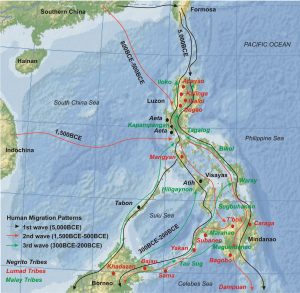
Is There Hope for Genomic Research in Foreign Countries?
Although there are many conflicting opinions on the ethical concerns of foreign genomic research, there is still hope for this research to continue. Genomic research has many benefits because it assist researchers trying to understand many things, such as human migration patterns worldwide. However, the important factor is keeping research ethical. If everyone agrees on how we can conduct ethical research, this can unlock more than just human population migration patterns. This can reveal the evolution of various genetic mutations in countries with high incidence of certain diseases. That being said, genomic research in foreign countries can also enhance our knowledge of the evolution of humanity. 8 This research can further our understanding of how common our genes are compared to other organisms on Earth. Despite these benefits, this can occur if researchers implement a more solid ethical structure when creating their studies. For example, a study published in 2014 discussed the different genomes sequenced in various Filipino groups that represented a melting pot of lineages. Like the study discussed in the second section of this article, these researchers were interested in understanding how human migration has developed over time in the Philippines and what kind of origin the country holds. This study is more ethically sound because they explicitly stated the various committee guidelines they followed, including one of the most important committees, the Philippine National Bioethics Committee on Scientific Research.9 This Philippine committee is essential because it is not just any bioethics committee but one located within the Philippines. Although the other study followed guidelines, it must also follow the committees within the Philippines. This is because researchers are utilizing the DNA of individuals from this island, so a committee needs to ensure their population is treated fairly. While there is much information to unlock about the thousands of islands that make up this beautiful country, many improvements still need to be implemented to create a more trusting, ethical environment for research.

Where Do We Go from Here?
There are many unknowns within our world, so this naturally inspires researchers to go out there and gather as much information as possible to decipher and connect. Since 2001, the advancement of genomic research has been on a significant rise in our society, allowing the scientific community to unlock many secrets of our world. This includes even how humans might have migrated throughout time. However, as stated previously, there are many blind spots that researchers fail to make known when they are conducting research with humans and their DNA samples. From genetically modified babies to genetically engineering laboratory animals, these have all raised concerns regarding how ethical these experiments are. This also includes the historical and cultural studies conducted in various countries, like the Philippines. So, if we want to understand topics like migration patterns, how do we produce ethically sound studies? First, we must identify the primary issue of the study. In this case, it was the fact that the researchers from Uppsala University in Sweden did not take the extra time and measures to go to committees within the Philippines that oversaw the health of the Filipinos. This can pose a significant issue because many individuals are unconsciously willing to donate their DNA samples to these researchers to analyze and sequence. Although this does not seem like a great deal, these communities that researchers are studying come from societies where resources are scarce, and education is rare. If researchers do not take that extra time to fully break down the scope of their study to these people, this can lead to mistrust. This complication further leads to a potential halt in studying human migration patterns. So, where do we go from here?
A solution that might seem obvious is creating a more ethically structured foundation for these studies. Again, as apparent as this might seem, this has many layers that form an ethically sound structure. The first thing any researcher should do is collect all verifications and the “go-ahead” from any committees deemed necessary before running the study. Although the group in Sweden obtained lots of confirmations, they should have tried talking to the committee within the Philippines that is in charge of human samples within the health communities. Despite the study being deemed historical and cultural, these DNA samples are being analyzed. From there, another way to make these studies more ethically sound is for these researchers to communicate and educate their volunteers who donate a sample. While being in a foreign country has its ups and downs, it is always important to keep constant and clear communication when involving anyone foreign in a study conducted by people not from their region. Taking time to break down the idea of the study’s purpose helps to build trust between the researcher and the participants because this shows the participants that they are not simply being used for another study. They will feel free from all the jargon that science can bring at

times, making them feel more comfortable participating in a research study.
Another solution to consider is to bring in translators or people who can help bridge that communication gap. Communication makes foreign studies easier to conduct because if researchers are trying to gain consent, but the participant says yes without a complete understanding of what they were told, this can raise many issues. With all these ideas for improvement in mind, it is essential to implement them because it is simply not enough if a researcher asks for approval to run their study. Researchers can create a list of guidelines to ensure their plan is ethically sound. Implementing these improvements will also help bridge that potential gap between participants and researchers. It is like the relationship between patients and doctors, where patients might be nervous about being open to their providers. Establishing that clear communication will help bring immense improvements to these types of studies. While there is still much to improve regarding genomic research and the ethics behind these studies, there is still hope for the future. If improvements are implemented, the future of human genomic research will continue to move forward in a positive direction.
- Philippines geography, maps, climate, environment and terrain from Philippines |—CountryReports. (n.d.). Retrieved October 6, 2024, from https://www.countryreports.org/country/Philippines/geography.htm. ↵
- Philippines. (2024). In The World Factbook. Central Intelligence Agency. https://www.cia.gov/the-world-factbook/countries/philippines/#people-and-society. ↵
- Larena, M., Sanchez-Quinto, F., Sjödin, P., McKenna, J., Ebeo, C., Reyes, R., Casel, O., Huang, J.-Y., Hagada, K. P., Guilay, D., Reyes, J., Allian, F. P., Mori, V., Azarcon, L. S., Manera, A., Terando, C., Jamero, L., Sireg, G., Manginsay-Tremedal, R., … Jakobsson, M. (2021). Multiple migrations to the Philippines during the last 50,000 years. Proceedings of the National Academy of Sciences of the United States of America, 118(13), e2026132118. https://doi.org/10.1073/pnas.2026132118. ↵
- Larena, M., Sanchez-Quinto, F., Sjödin, P., McKenna, J., Ebeo, C., Reyes, R., Casel, O., Huang, J.-Y., Hagada, K. P., Guilay, D., Reyes, J., Allian, F. P., Mori, V., Azarcon, L. S., Manera, A., Terando, C., Jamero, L., Sireg, G., Manginsay-Tremedal, R., … Jakobsson, M. (2021). Multiple migrations to the Philippines during the last 50,000 years. Proceedings of the National Academy of Sciences of the United States of America, 118(13), e2026132118. https://doi.org/10.1073/pnas.2026132118. ↵
- Rodriguez, J. J. R. B., Cuales, J. M. D., Herrera, M. J. B., Zubiri, L. A. M., Muallil, R. N., Ishmael, A. I., Jimenez, E. B., Stoneking, M., & De Ungria, M. C. A. (2022). Ethical challenges in genetic research among Philippine Indigenous Peoples: Insights from fieldwork in Zamboanga and the Sulu Archipelago. Frontiers in Genetics, 13, 901515. https://doi.org/10.3389/fgene.2022.901515. ↵
- Rodriguez, J. J. R. B., Cuales, J. M. D., Herrera, M. J. B., Zubiri, L. A. M., Muallil, R. N., Ishmael, A. I., Jimenez, E. B., Stoneking, M., & De Ungria, M. C. A. (2022). Ethical challenges in genetic research among Philippine Indigenous Peoples: Insights from fieldwork in Zamboanga and the Sulu Archipelago. Frontiers in Genetics, 13, 901515. https://doi.org/10.3389/fgene.2022.901515. ↵
- Rodriguez, J. J. R. B., Cuales, J. M. D., Herrera, M. J. B., Zubiri, L. A. M., Muallil, R. N., Ishmael, A. I., Jimenez, E. B., Stoneking, M., & De Ungria, M. C. A. (2022). Ethical challenges in genetic research among Philippine Indigenous Peoples: Insights from fieldwork in Zamboanga and the Sulu Archipelago. Frontiers in Genetics, 13, 901515. https://doi.org/10.3389/fgene.2022.901515. ↵
- Potential Benefits of HGP Research. (n.d.). Retrieved October 6, 2024, from https://doe-humangenomeproject.ornl.gov/potential-benefits-of-hgp-research/. ↵
- Delfin, F., Min-Shan Ko, A., Li, M., Gunnarsdóttir, E. D., Tabbada, K. A., Salvador, J. M., Calacal, G. C., Sagum, M. S., Datar, F. A., Padilla, S. G., De Ungria, M. C. A., & Stoneking, M. (2014). Complete mtDNA genomes of Filipino ethnolinguistic groups: A melting pot of recent and ancient lineages in the Asia-Pacific region. European Journal of Human Genetics, 22(2), 228–237. https://doi.org/10.1038/ejhg.2013.122. ↵




7 comments
Kaitlyn Villanueva
I really enjoyed your article. It was so interesting to learn about science and its tie to culture. I love how you not only incorporated visuals but also provided maps to show the locations of this research. I also really liked how you worded your title, it was different and leaves the reader questioning what information will be provided. Great job!
arosales11
This was a fascinating essay about the ethics of genetic research in the Philippines. I discovered how difficult it is to perform scientific studies using human DNA samples, especially when researchers are from various countries. The paper does a good job of demonstrating the significance of acquiring correct permission, recognizing cultural settings, and respecting indigenous populations. I admire how it highlighted the need of transparent communication and ethical rules in scientific study.
Jordan Robbins
Hi, through your writing I learned so much more about the Philipines and how science or scientist are abusing their resources and cultures for the expense of “research”. I really hope that they find another way to do their study or maybe drop the whole thing. Thank you for sharing this and posting this because their is many things I learned about this today!
Freya Hayes
This article was extremely educational. Through this article I learned that the communication gap is one reason the ethical practices struggle. As a society we must do a better job of closing the communication gap. I really enjoyed how organized the article was and how it was laid out. The author went into great detail about this particular topic and provided a lot of useful information. My constructive recommendation is that there was a lot of information in this article and it was a little overwhelming at certain points. However, I found this article very informative and beneficial.
Alysia Cano
This article raises crucial ethical concerns surrounding genomic research, particularly the importance of adhering to local ethical guidelines and ensuring clear communication with participants. By emphasizing the need for better frameworks and cultural sensitivity, it offers valuable insight into how genomic studies can progress responsibly while maintaining trust and respect for indigenous communities.
Danielle Villanueva
This was a fascinating article about the ethics of genomic research in the Philippines! I learned how complex it is to conduct scientific studies involving human DNA samples, especially when researchers come from different countries. The article does an excellent job explaining the importance of obtaining proper consent, understanding cultural contexts, and respecting indigenous communities. I appreciate how it highlighted the need for clear communication and ethical guidelines in scientific research.
Cesia Gonzalez
I enjoyed your piece! You did an excellent job breaking down a complex topic into easy-to-understand points. The visuals are engaging and help convey your message. Highlighting the ethical considerations is crucial, and you presented it in a thought-provoking way. I love the flow of your writing! Overall, I’m glad that I read your piece! Amazing work!